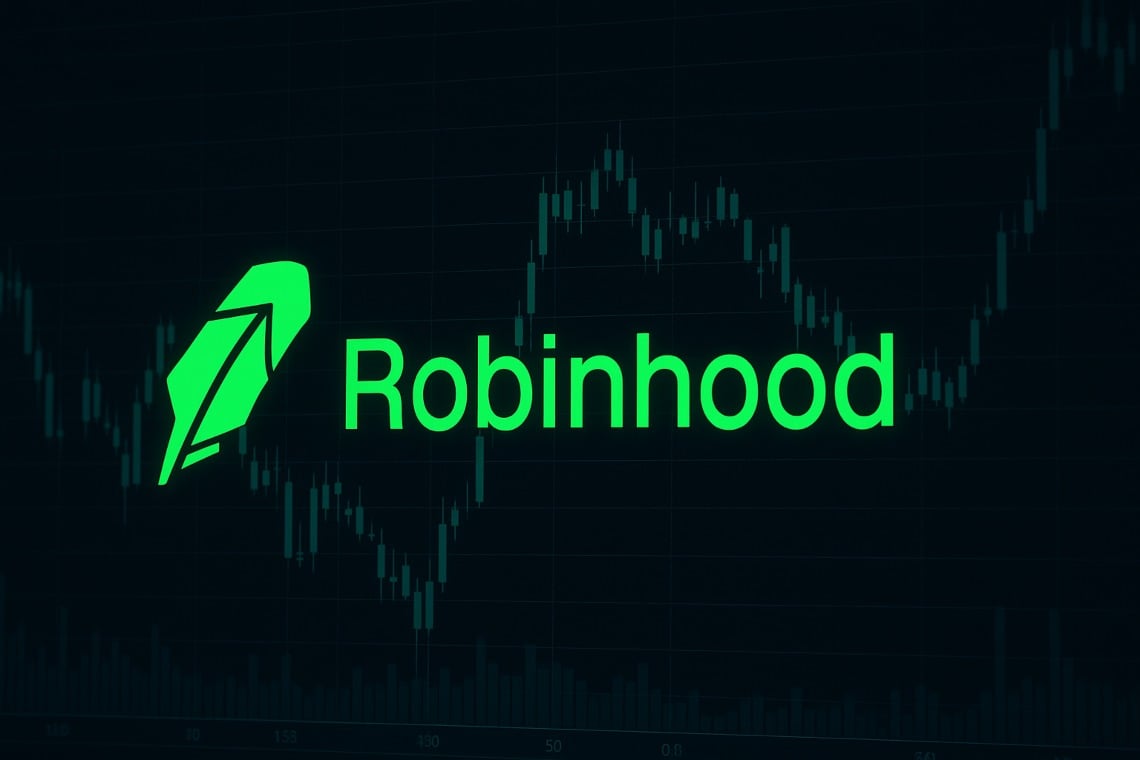Although broker-dealers, banks, and financial institutions also operate on Robinhood in trading and brokerage activities, the market makers dominate, including those in crypto.
This is what emerges from the latest quarterly report submitted by the company to the SEC.
Robinhood is a USA company listed on the stock exchange, so it is legally required to submit periodic economic-financial reports to the agency that oversees the bull and bear market of securities in the United States.
“`html
Robinhood
“`
Robinhood Markets is a United States financial services company founded in 2013 and headquartered in Menlo Park, California.
It has been listed on Nasdaq since 2021 with the ticker HOOD, and recently its stock has recorded an excellent rally.
The company is mainly known for its commission-free online trading app, where both traditional assets and crypto can be exchanged.
It is primarily aimed at retail investors and speculators, especially young people, and it is probably for this reason that crypto has gained traction on this platform.
The debut on the stock exchange occurred with a price of $38, which immediately skyrocketed to 85 the month following the listing. However, that bubble burst the very next month, and by the end of the year, the price had already fallen below the initial price.
During the bear-market of 2022/2023, the price of the HOOD stock plummeted to below $7, but starting from December 2023, it began a climb that effectively concluded only in February of this year. The peak of 2025 was recorded just below $67, which is significantly higher than the current price, but lower than the all-time high of four years ago.
The crypto market makers on Robinhood
In the lengthy quarterly report just submitted to the SEC, and specifically in Note 1 on page 11, the data concerning the revenue concentrations of the first quarter of 2025 are reported.
What emerges is that 63% of the company’s total revenues from January to March of this year came from the sole market makers. Moreover, in the first quarter of last year, this percentage was 52%, so the latest figure has also shown a strong increase compared to a year ago.
The main market makers that generated revenues for Robinhood in the first quarter of 2025 were Citadel Securities and B2C2 USA, with 12% each, followed by Wintermute Trading with 11%.
The crypto market makers are entities or companies that provide liquidity to cryptocurrency markets. Their main role is to ensure that there are always buyers and sellers available for a specific crypto, facilitating transactions and making the market more efficient.
Technically, they operate on exchanges by continuously placing buy and sell orders for various cryptocurrencies, and they earn from the difference between the purchase price and the selling price with the so-called spread. In fact, they buy at a slightly lower price and sell at a slightly higher price, thus making small profits on each transaction, but with a huge number of automated transactions.
By consistently placing new buy and sell orders, they effectively provide liquidity to the exchanges, furthermore, they reduce the gap between the highest buy price and the lowest sell price.
In this way, the other traders, called market takers, can execute their orders more quickly and with less difference between the expected price and the actual execution price (the so-called slippage).
In fact, the market makers are essential for the proper functioning of the crypto markets.
The revenues of Robinhood
Robinhood does not charge commissions on transactions, so it does not generate revenue from user commissions.
Instead, it uses the so-called Payment for Order Flow (PFOF), which consists precisely in directing users’ orders to market makers, rather than directing them directly to the exchanges. Therefore, it is the market makers who pay a small commission to the platform.
This is why the majority of the company’s revenue comes from market makers and not from users, even though in reality, in the end, the fees applied to market makers are still somehow paid by the clients through the price spreads.
However, Robinhood also generates other types of revenue, such as interest on customer cash balances, or on margin and securities lending: Additionally, it offers various paid additional services and a debit card through which it earns small commissions on its use.
